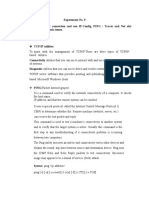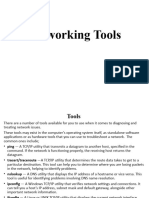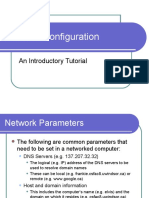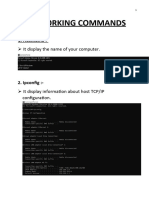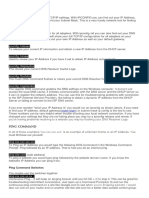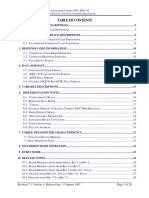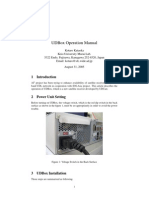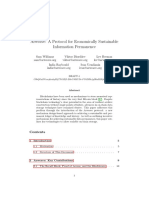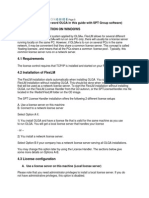0% found this document useful (0 votes)
121 views10 pagesLab-1 - Windows Network Commands
The document lists 10 essential Windows network commands for troubleshooting and monitoring network activities, including commands like ping, ipconfig, and tracert. Each command is accompanied by a description, example usage, and output illustration to demonstrate its functionality. Additionally, it explains concepts such as latency, transit time, propagation speed, and propagation delay in networking.
Uploaded by
karthikgajavellyCopyright
© © All Rights Reserved
We take content rights seriously. If you suspect this is your content, claim it here.
Available Formats
Download as DOCX, PDF, TXT or read online on Scribd
0% found this document useful (0 votes)
121 views10 pagesLab-1 - Windows Network Commands
The document lists 10 essential Windows network commands for troubleshooting and monitoring network activities, including commands like ping, ipconfig, and tracert. Each command is accompanied by a description, example usage, and output illustration to demonstrate its functionality. Additionally, it explains concepts such as latency, transit time, propagation speed, and propagation delay in networking.
Uploaded by
karthikgajavellyCopyright
© © All Rights Reserved
We take content rights seriously. If you suspect this is your content, claim it here.
Available Formats
Download as DOCX, PDF, TXT or read online on Scribd
/ 10











